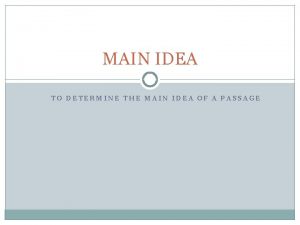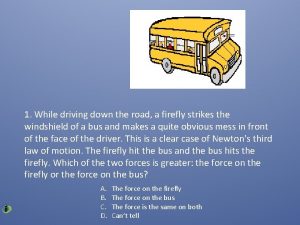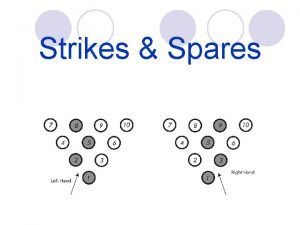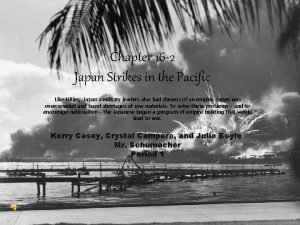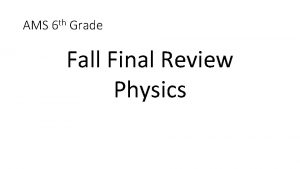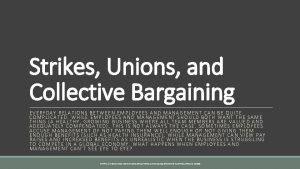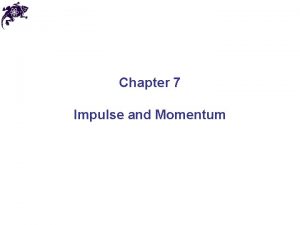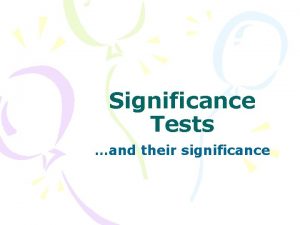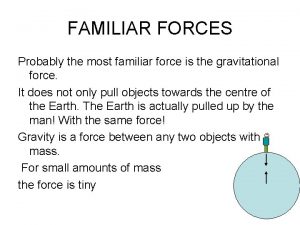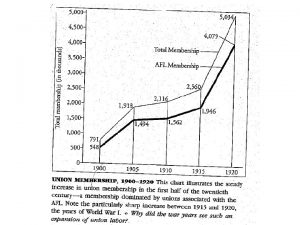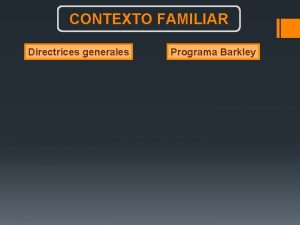STRIKES SIGNIFICANCE OF STRIKES Most people familiar with


















- Slides: 18

STRIKES

SIGNIFICANCE OF STRIKES • Most people familiar with strikes • Strikes tend to get media attention yet 90% of all agreements settled without strikes • Perception is that strikes only way to settle industrial conflict • Need to be viewed as part of larger context of industrial conflict • Labour relations laws developed largely in response to strike activity

WHAT IS A STRIKE? • Concerted activity involving collective refusal to work – Slowdown – Work-to-rule • Restrictions and provisions to when a strike can occur • Strike restrictions may exist in public sector

MEASURING STRIKE ACTIVITY AND INTENSITY • Measures of strike activity – Frequency – Number of workers involved – Duration – Person-days lost

MEASURING STRIKE ACTIVITY AND INTENSITY (continued) • Recent trends – Steadily declining since 1970 s – Increase in public sector – Community, business, personal services, transportation, communication, and utilities account for more than one-half

MEASURING STRIKE ACTIVITY AND INTENSITY (continued) • Recent trends (continued) – Different types of strikes occur for different reasons • First-contract--employer’s willingness to bargain • Renegotiation--money • Wildcat--specific issue during life of agreement – Most person-days lost during renegotiation strike – Strikes tend to rise and fall in relation to business cycle

CAUSES OF STRIKES • Serious medium- or long-term worker frustration – Poor labour-management relations – Extremely difficult economic environment • Triggering incident • Complex issue

CAUSES OF STRIKES (continued) • Avoidable – True positions overlap – Sufficient information • Unavoidable – Fundamental disagreement over issue of principle – No settlement zone – Desire to change bargaining framework

CAUSES OF STRIKES (continued) • Mistakes – Immature or flawed bargaining relationships – Lack of skill and experience – Inability to get along – Intraorganizational conflict – One party having more/better information than other party • Collective voice

CAUSES OF STRIKES (continued) • Big picture – One of many forms of workplace conflict – Conflict can be individual or group – Some mechanisms for resolving conflict better than others

DISPUTE RESOLUTION METHODS • • Wide variety Involve third party Work in different ways Government intervention attempts to strike balance • Without government intervention parties may be forced to find more creative ways

DISPUTE RESOLUTION METHODS (continued) • Compulsory conciliation – Government official meets with parties – Attempts to determine possibilities of settlement – Increasingly becoming more like mediation – Could consist of tri-partite board

DISPUTE RESOLUTION METHODS (continued) • Mediation – Neutral third party – Voluntary – Variety of roles and functions • • Determine key issues Identify settlement zone Act as go-between Deal with media

DISPUTE RESOLUTION METHODS (continued) • Arbitration – Interest • Neutral establishes terms and conditions of new collective agreement • Normal method of resolving contract disputes involving essential employees (police, fire) • Compulsory infrequently used in private sector • Governments reluctant to use arbitration for fear arbitrator will impose high costs

DISPUTE RESOLUTION METHODS (continued) • Arbitration (continued) – Interest (continued) • Conventional--arbitrator given latitude to shape final award • Final-offer--arbitrator picks between final position of each party – Rights or grievance • Neutral determines interpretation of collective agreement language

DISPUTE RESOLUTION METHODS (continued) • Mediation-arbitration (med-arb) – Hybrid – Neutral functions first as mediator – If no settlement within set period of time, neutral functions as arbitrator – Probably works best where neutral has worked with parties and knows them well

DISPUTE RESOLUTION METHODS (continued) • Fact-finding – – Neutral gathers information and facts Usually involves presentations by parties Prepares report with recommendations Recommendations never binding • Back-to-work legislation – Issued to end public sector strikes – Done when government feels risk to public health, safety, order or welfare

FUTURE OF STRIKE ACTIVITY • On the rise • Primarily in public sector due to previous wage freezes • Collective bargaining process less able to defuse conflict • Dispute resolutions methods not enough • May need fundamental re-thinking, particularly in public sector
 Most people are familiar with
Most people are familiar with It is often said that lightning never strikes
It is often said that lightning never strikes When a firefly hits a bus
When a firefly hits a bus Strikes and spares
Strikes and spares Wave behavior reflection
Wave behavior reflection Japan strikes in the pacific
Japan strikes in the pacific Light strikes
Light strikes Fault line
Fault line Properties of light
Properties of light Three strikes
Three strikes Gilded age union strikes
Gilded age union strikes Miners strike 1912
Miners strike 1912 The sun the empire strikes back
The sun the empire strikes back When a wave strikes an object and bounces off
When a wave strikes an object and bounces off Transparent objects
Transparent objects Pink panther strikes again soundtrack
Pink panther strikes again soundtrack A car traveling at 100 km/h strikes an unfortunate bug
A car traveling at 100 km/h strikes an unfortunate bug Strikes unions and collective bargaining
Strikes unions and collective bargaining A golf ball strikes a hard smooth floor
A golf ball strikes a hard smooth floor

